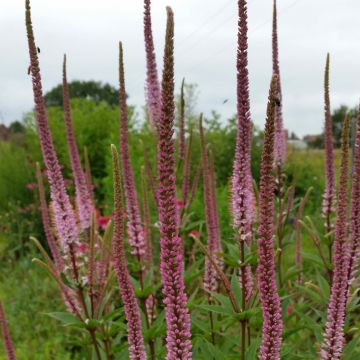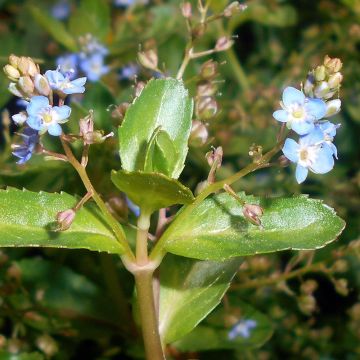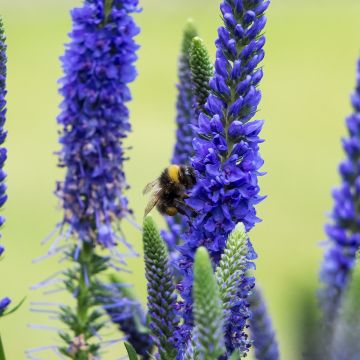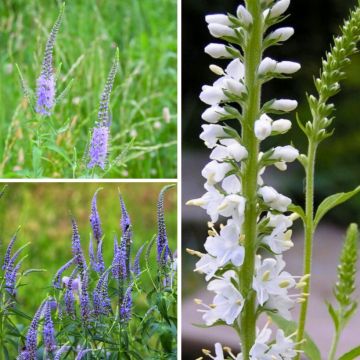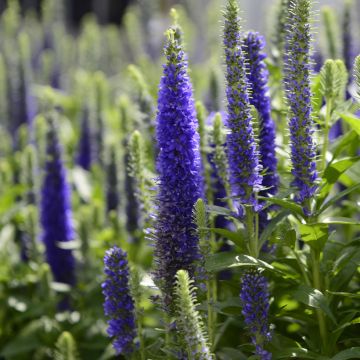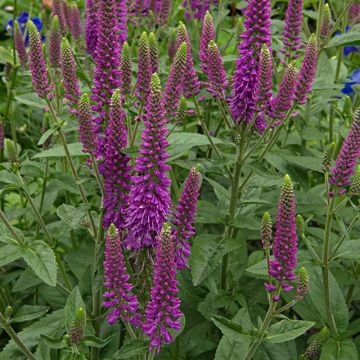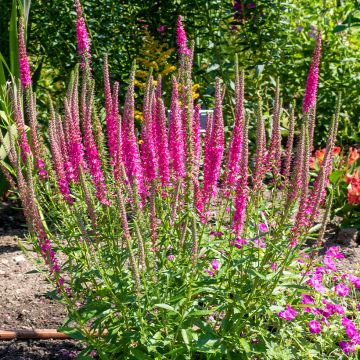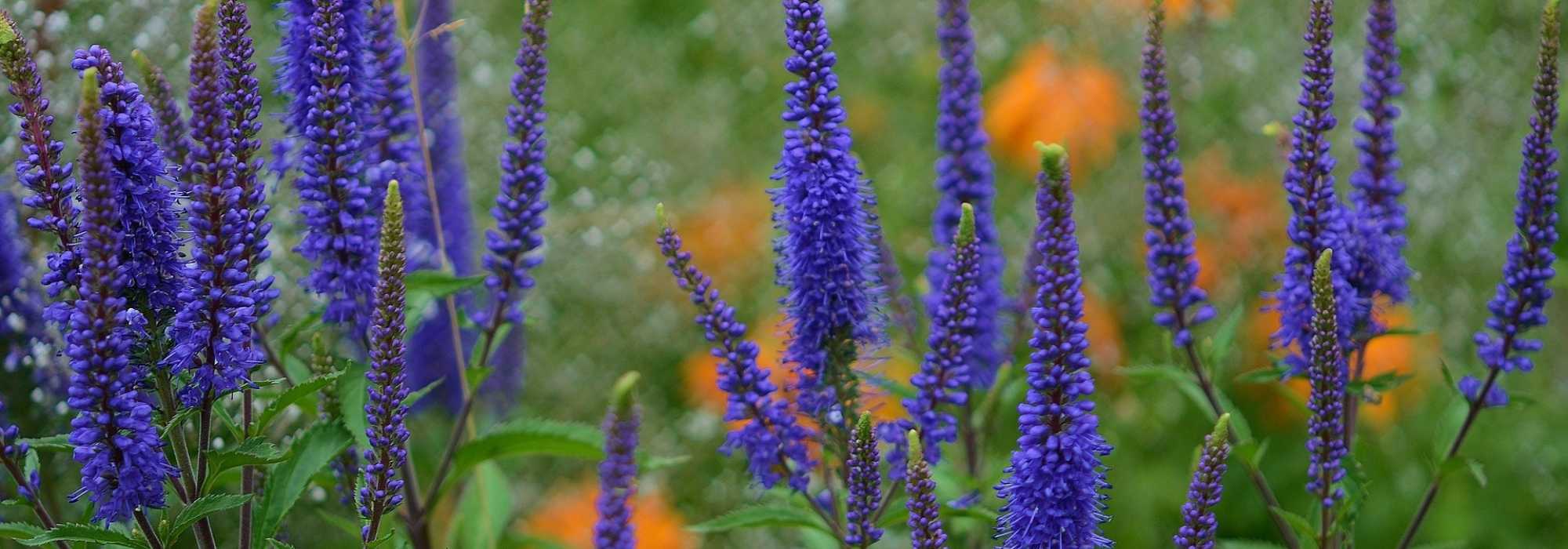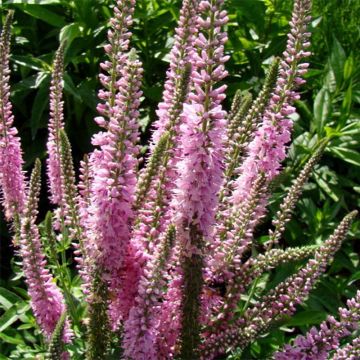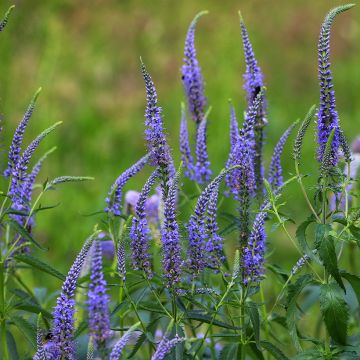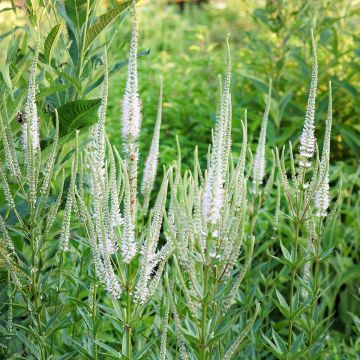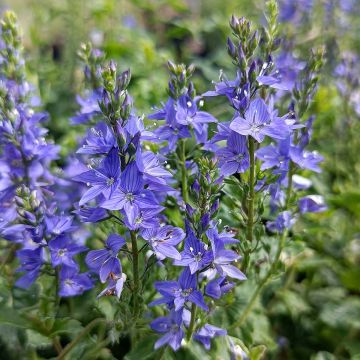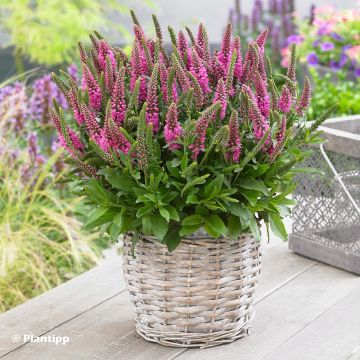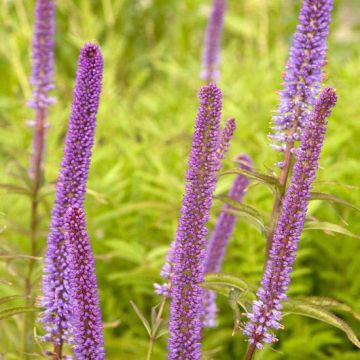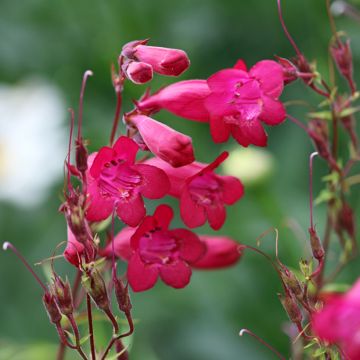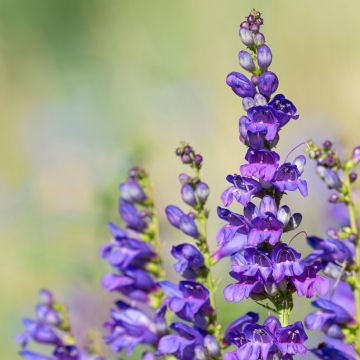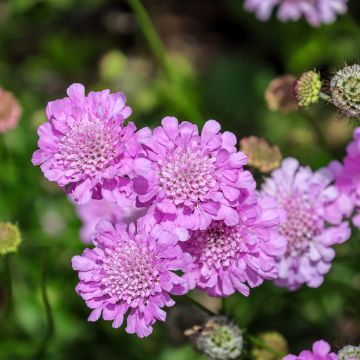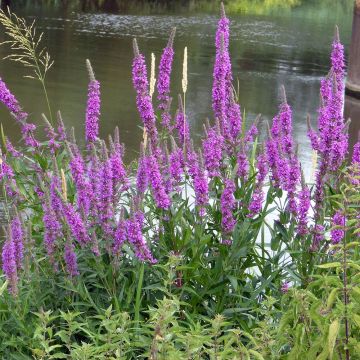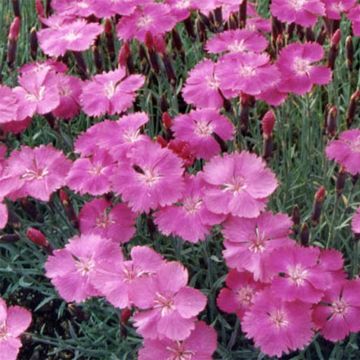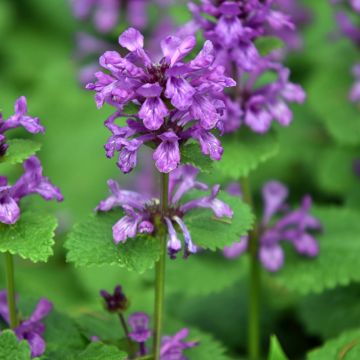

Veronica Baby Blue


Veronica Baby Blue


Veronica Baby Blue
Veronica Baby Blue
Veronica spicata x austriaca Baby Blue
Speedwell
Special offer!
Receive a €20 voucher for any order over €90 (excluding delivery costs, credit notes, and plastic-free options)!
1- Add your favorite plants to your cart.
2- Once you have reached €90, confirm your order (you can even choose the delivery date!).
3- As soon as your order is shipped, you will receive an email containing your voucher code, valid for 3 months (90 days).
Your voucher is unique and can only be used once, for any order with a minimum value of €20, excluding delivery costs.
Can be combined with other current offers, non-divisible and non-refundable.
Why not try an alternative variety in stock?
View all →This plant carries a 12 months recovery warranty
More information
We guarantee the quality of our plants for a full growing cycle, and will replace at our expense any plant that fails to recover under normal climatic and planting conditions.
Would this plant suit my garden?
Set up your Plantfit profile →
Description
Veronica spicata 'Baby Blue' is a small, compact and low, campanulate Veronica which forms a creeping clump. It is topped in summer by long, elegant, sculptural flowering spikes in beautiful indigo blue to deep violet. A robust and hardy perennial plant, it thrives and spreads in sunny or partially shaded flower beds, slopes and rockeries, in ordinary but well-drained soil. It is a beautiful border plant and also looks lovely in summer bouquets.
Veronica spicata, commonly known as spike speedwell, is a perennial plant belonging to the Plantaginaceae family, formerly classified in the Scrophulariaceae family. It is mainly found from Europe to Turkey, in central and eastern Asia, where it grows in mountains, up to 2000 metres (6562 feet) above sea level and occasionally in plains. It can be found growing in meadows, dry grasslands, rocky slopes and at the edge of forests, mostly on limestone soil. It adapts very well to most gardens, in well-drained soil. 'Baby Blue' is a selection obtained by Walter Blom in the Netherlands in 2006. It is a cross-breeding between Veronica spicata and V. austriaca. It is compact, bushy and vigorous, reaching 15 cm (6in) high for the foliage and 30 cm (12in) when flowering, spreading over a diameter of 30-40 m (98-131ft) from its powerful semi-woody crown. Its hairy stems are branched towards the top and bear ovate to linear, beautiful dark green leaves, with finely toothed edges that often persist in winter. Between June and August, under good conditions, it produces floral stems covered with densely packed, tiny star-shaped flowers in indigo blue to dark violet. These nectar-rich flowers are attractive to bees. The plant can self-seed in the garden, in light soil, but not always faithfully to the parent plant.
This Baby Blue spike speedwell should be planted in well-drained, even rocky and limestone soil that stays slightly moist in summer, in full sun or light shade. It is particularly suitable for an alpine garden with rocky soil. It can be planted in raised flower beds, at the base of taller plants, on a slope, in a rockery, or even in a pot. It can be paired with perennial echinaceas, perennial or shrubby salvias, scabious and lavender in matching tones. Its relatively flexible blue spikes add height and colour to a low-growing flower bed composed of creeping plants like aubrietias, wall bellflowers, soapwort or snow-in-summer. The dwarf spike speedwell can also be used en masse, as a standalone plant, or in the gaps between paving stones.
Veronica Baby Blue in pictures






Flowering
Foliage
Plant habit
Botanical data
Veronica
spicata x austriaca
Baby Blue
Plantaginaceae
Speedwell
Cultivar or hybrid
Other Veronica - Speedwell
View all →Planting and care
Baby Blue spike speedwell is a sun-loving plant that thrives in poor, well-drained soil. Its preferred habitat is limestone, rocky or gravelly soil which stays slightly moist in summer. It is more sensitive to stagnant moisture in winter than to cold. You can cut back the unattractive, brown faded stems to promote a new round of flowering. You can also allow a few plants to self-seed. The resulting plants will not always be identical to the parent plant. In either case, the clumps should be cut back in spring before the start of new growth.
Planting period
Intended location
Care
Planting & care advice
This item has not been reviewed yet - be the first to leave a review about it.
Similar products
Haven't found what you were looking for?
Hardiness is the lowest winter temperature a plant can endure without suffering serious damage or even dying. However, hardiness is affected by location (a sheltered area, such as a patio), protection (winter cover) and soil type (hardiness is improved by well-drained soil).

Photo Sharing Terms & Conditions
In order to encourage gardeners to interact and share their experiences, Promesse de fleurs offers various media enabling content to be uploaded onto its Site - in particular via the ‘Photo sharing’ module.
The User agrees to refrain from:
- Posting any content that is illegal, prejudicial, insulting, racist, inciteful to hatred, revisionist, contrary to public decency, that infringes on privacy or on the privacy rights of third parties, in particular the publicity rights of persons and goods, intellectual property rights, or the right to privacy.
- Submitting content on behalf of a third party;
- Impersonate the identity of a third party and/or publish any personal information about a third party;
In general, the User undertakes to refrain from any unethical behaviour.
All Content (in particular text, comments, files, images, photos, videos, creative works, etc.), which may be subject to property or intellectual property rights, image or other private rights, shall remain the property of the User, subject to the limited rights granted by the terms of the licence granted by Promesse de fleurs as stated below. Users are at liberty to publish or not to publish such Content on the Site, notably via the ‘Photo Sharing’ facility, and accept that this Content shall be made public and freely accessible, notably on the Internet.
Users further acknowledge, undertake to have ,and guarantee that they hold all necessary rights and permissions to publish such material on the Site, in particular with regard to the legislation in force pertaining to any privacy, property, intellectual property, image, or contractual rights, or rights of any other nature. By publishing such Content on the Site, Users acknowledge accepting full liability as publishers of the Content within the meaning of the law, and grant Promesse de fleurs, free of charge, an inclusive, worldwide licence for the said Content for the entire duration of its publication, including all reproduction, representation, up/downloading, displaying, performing, transmission, and storage rights.
Users also grant permission for their name to be linked to the Content and accept that this link may not always be made available.
By engaging in posting material, Users consent to their Content becoming automatically accessible on the Internet, in particular on other sites and/or blogs and/or web pages of the Promesse de fleurs site, including in particular social pages and the Promesse de fleurs catalogue.
Users may secure the removal of entrusted content free of charge by issuing a simple request via our contact form.
The flowering period indicated on our website applies to countries and regions located in USDA zone 8 (France, the United Kingdom, Ireland, the Netherlands, etc.)
It will vary according to where you live:
- In zones 9 to 10 (Italy, Spain, Greece, etc.), flowering will occur about 2 to 4 weeks earlier.
- In zones 6 to 7 (Germany, Poland, Slovenia, and lower mountainous regions), flowering will be delayed by 2 to 3 weeks.
- In zone 5 (Central Europe, Scandinavia), blooming will be delayed by 3 to 5 weeks.
In temperate climates, pruning of spring-flowering shrubs (forsythia, spireas, etc.) should be done just after flowering.
Pruning of summer-flowering shrubs (Indian Lilac, Perovskia, etc.) can be done in winter or spring.
In cold regions as well as with frost-sensitive plants, avoid pruning too early when severe frosts may still occur.
The planting period indicated on our website applies to countries and regions located in USDA zone 8 (France, United Kingdom, Ireland, Netherlands).
It will vary according to where you live:
- In Mediterranean zones (Marseille, Madrid, Milan, etc.), autumn and winter are the best planting periods.
- In continental zones (Strasbourg, Munich, Vienna, etc.), delay planting by 2 to 3 weeks in spring and bring it forward by 2 to 4 weeks in autumn.
- In mountainous regions (the Alps, Pyrenees, Carpathians, etc.), it is best to plant in late spring (May-June) or late summer (August-September).
The harvesting period indicated on our website applies to countries and regions in USDA zone 8 (France, England, Ireland, the Netherlands).
In colder areas (Scandinavia, Poland, Austria...) fruit and vegetable harvests are likely to be delayed by 3-4 weeks.
In warmer areas (Italy, Spain, Greece, etc.), harvesting will probably take place earlier, depending on weather conditions.
The sowing periods indicated on our website apply to countries and regions within USDA Zone 8 (France, UK, Ireland, Netherlands).
In colder areas (Scandinavia, Poland, Austria...), delay any outdoor sowing by 3-4 weeks, or sow under glass.
In warmer climes (Italy, Spain, Greece, etc.), bring outdoor sowing forward by a few weeks.






























